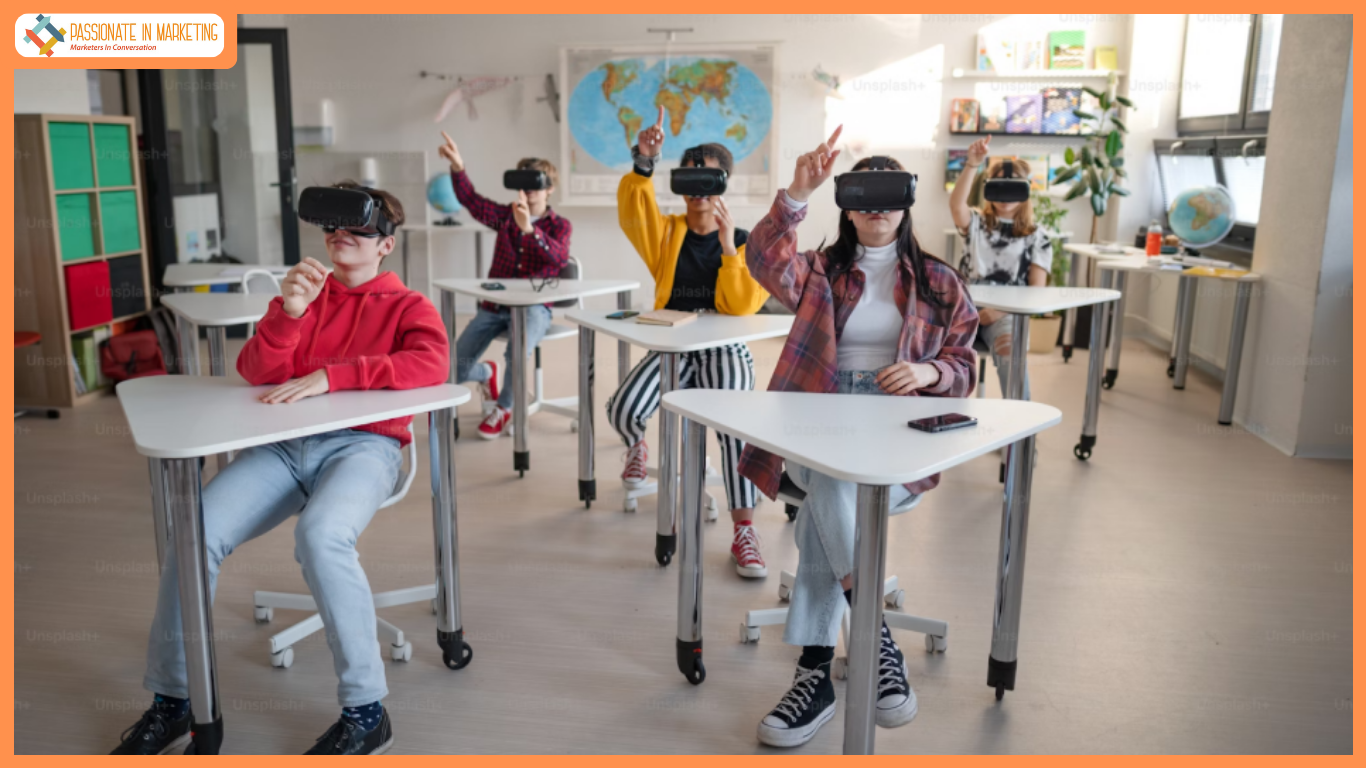
How Technology is Transforming International School Education
International schools are at the forefront of using technology to enrich the educational experience. By integrating digital tools, they make learning more engaging, interactive, and relevant to the modern world. This approach not only equips students with essential future skills but also fosters qualities like resilience, adaptability, and global citizenship.
Instant access to a wide range of information allows students to learn and research more efficiently, while diverse online resources support improved academic performance. Technology also enables distance learning, giving students the flexibility to attend virtual classes from anywhere in the world. In addition, digital platforms are enhancing student communication and collaboration skills. These innovations are transforming education, preparing students to thrive in an increasingly connected and tech-driven global landscape.
Modern Learning Environments Powered by Technology

International schools are transforming modern learning environments through smart classrooms and blended learning models. These settings often include:
- Adaptable furniture
- Technology to boost student engagement and interaction
- Tablets and mobile phones as essential tools, enabling personalized learning tailored to individual needs in the classroom.
Virtual and augmented reality technologies create immersive learning experiences, stimulating creativity and critical thinking. Students can explore historical sites via virtual reality or conduct science experiments in virtual labs. Cloud-based platforms enable collaborative projects, allowing students to work together from different locations, enhancing teamwork and communication skills. This innovative approach to education transforms the traditional classroom into a dynamic learning experience that incorporates artificial intelligence.
Data analytics help educators assess student performance in real-time in these modern learning environments. This allows for timely interventions and support, ensuring each student reaches their full potential. As technology evolves, these digital tools will further enhance learning analytics, making it more dynamic and engaging.
Supporting Flexible Learning Through Digital Infrastructure
Flexible education plans, supported by contract SIM options and robust Internet data, are increasingly important in international schools. These solutions offer remote learning opportunities and maintain connectivity for local and expatriate students. Mobile phones and cell phone tablets are essential in this digital infrastructure, enabling access to e-learning platforms and resources from anywhere.
Digital literacy is crucial, ensuring students effectively use technology to enhance learning. E-learning platforms provide diverse digital resources and learning resources, including:
- Video lessons
- Interactive quizzes
- Virtual labs
- Online libraries This digital infrastructure supports technology-enabled learning, making education more accessible and adaptable to individual needs.
The evolving edtech ecosystem provides new tools to support flexible learning opportunities. Continued investment in digital infrastructure equips schools to provide high-quality, flexible, and inclusive education. Solutions like Maxx further support affordable and efficient connectivity for students and schools alike.
Empowering Learning with Devices and Connectivity
Tech tools like mobile phones, tablets, laptops, and home broadband are the backbone of modern international school education. With the rise of digital learning environments, having the right devices and strong internet connectivity at home is no longer optional—it’s essential.
Smartphones and tablets support on-the-go access to e-learning platforms, enabling students to complete assignments, watch lectures, and collaborate with peers anytime, anywhere. M1 offers reliable mobile devices and connectivity solutions that help students stay connected and productive. Laptops remain critical for more complex tasks like research, writing reports, and participating in video conferencing.
Reliable home broadband ensures that virtual classrooms run smoothly and that students can engage in real-time interactions without disruptions. For families, contract-free SIM options and data plans offer flexible, cost-effective connectivity. This infrastructure not only supports daily learning but also ensures continuity during school closures, travel, or relocations—especially relevant for international families.
In short, a strong digital foundation at home ensures every student remains connected, engaged, and empowered to learn effectively.
Innovative Approaches to Extracurricular Activities
Extracurricular activities in international senior school activities are evolving with the integration of technology. Virtual clubs, online competitions, and digital sports tracking are examples of how technology enhances these activities for individual students. Tablets and mobile phones are essential for students to coordinate and participate in these activities.
Virtual reality tools provide immersive experiences, enabling students to explore areas like art or science beyond traditional learning environments. Online collaboration platforms encourage teamwork, enhancing communication and project management skills. Educational software apps support skill development in areas like coding, music production, and language learning.
Digital storytelling tools allow students to express creativity, merging technology with artistic expression. These fun innovative approaches make extracurricular activities more engaging and provide valuable learning experiences, contributing to students’ overall development.
Simplifying School Administration and Admissions
Digital platforms are streamlining administrative processes in international schools, enhancing efficiency and transparency. Most school administrators believe technology enhances overall school efficiency. An Admission Management System digitizes the enrollment process, enabling applicants to complete forms and submit documents online.
This system provides:
- Real-time tracking of applications, offering transparency for applicants and administrators.
- Centralization of student inquiries, ensuring comprehensive oversight of prospective students.
- Automation of the selection systems process, reducing manual errors and improving efficiency.
Advanced analytics offer insights into admission trends and demographics, helping administrators refine recruitment strategies. Digital channels promote international school open house events, enhancing parent engagement and community involvement.
Conclusion
In conclusion, technology continues to redefine the landscape of international education. From modern learning environments and enhanced communication to innovative extracurricular activities and streamlined administrative processes, digital tools are playing a crucial role in transforming education. By investing in digital infrastructure and promoting responsible use of technology, international schools can provide high-quality, flexible, and inclusive education that prepares students for a dynamic and interconnected world.
Frequently Asked Questions
How has technology enhanced the learning process in international schools?
Technology has significantly enhanced the learning process in international schools by offering instant access to vast information, enabling personalized learning experiences, and utilizing virtual and augmented reality tools for immersive education. This integration fosters a more engaging and effective learning environment.
What role do mobile devices play in modern learning environments?
Mobile devices are crucial in modern learning environments, as they facilitate personalized learning, provide seamless access to digital resources, and promote collaboration among students. Their integration enhances the overall educational experience.
How does technology improve communication and collaboration in schools?
Technology significantly improves communication and collaboration in schools by utilizing digital tools that facilitate real-time feedback and online communication, enabling effective sharing of updates and collaborative efforts among students and educators. This ensures a more connected and engaged learning environment.
In what ways has technology transformed extracurricular activities?
Technology has significantly enhanced extracurricular activities by enabling virtual clubs and online competitions while incorporating digital tools for sports tracking and skill development, leading to increased engagement and interactivity.
How do digital platforms streamline school administration and admissions?
Digital platforms enhance school administration and admissions by digitizing the enrollment process, enabling real-time application tracking, centralizing inquiries, and offering analytics for improved recruitment strategies. Consequently, this leads to increased efficiency and a more organized admission process.
**’The opinions expressed in the article are solely the author’s and don’t reflect the opinions or beliefs of the portal’**
Post Views: 77

